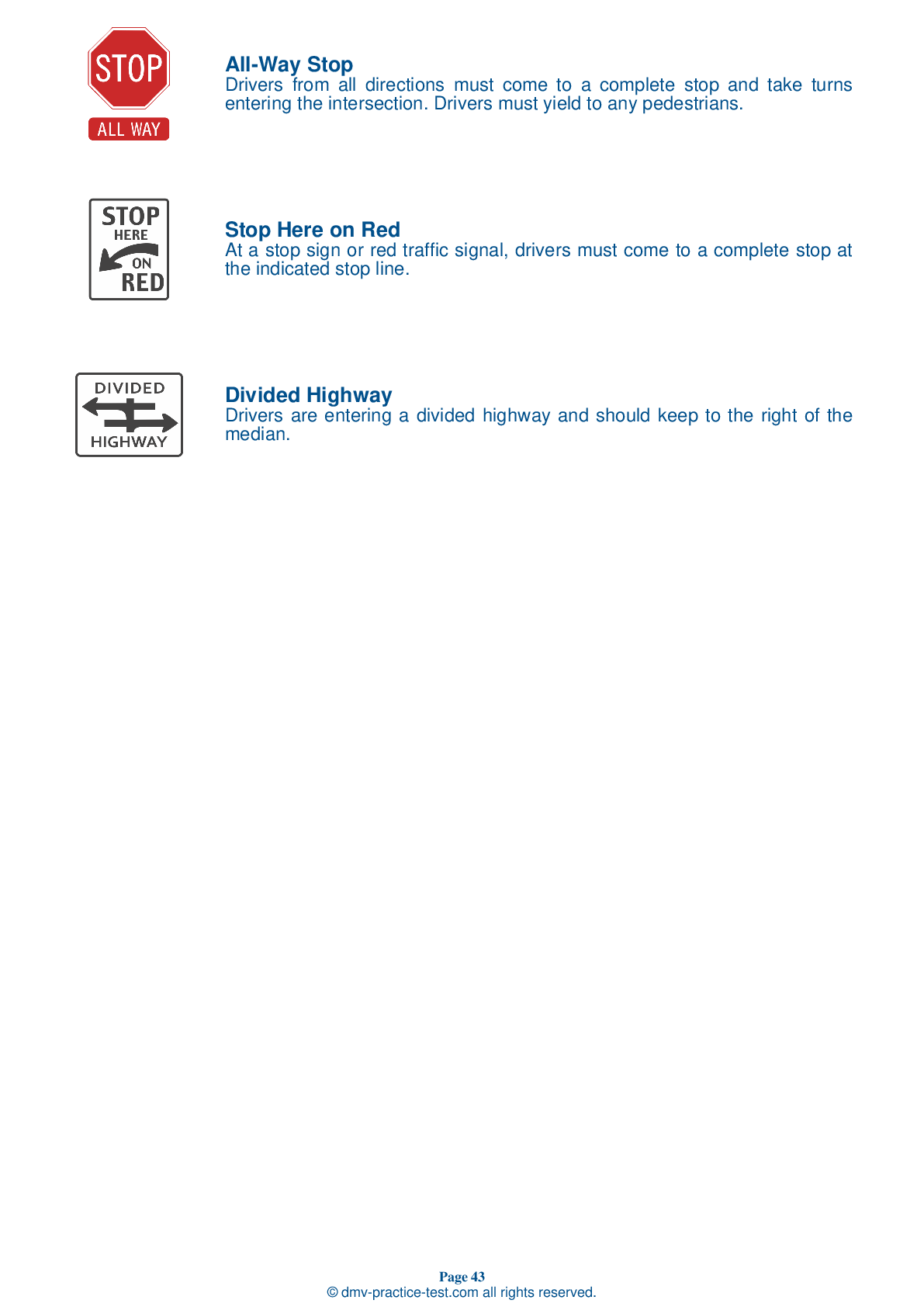FREE Connecticut DMV Practice Test #5 Page 3 of 3
This set of Connecticut DMV practise tests was just updated for January 2025. It includes questions based on the Connecticut Driver Handbook's most essential traffic signs and regulations for 2025. Use actual questions that are very similar (often identical!) to the DMV driving permit test and driver's licence exam to study for the DMV driving permit test and driver's licence exam.
Each practise test question has a hint and explanation to assist you in remembering the concepts. The written component of the official DMV test will include questions about road rules, traffic signs, and driving statutes, as well as information from the Driver Handbook.
To achieve the required passing grade, you must correctly answer 20 of the 25 questions. Take our DMV practise exam to help you prepare for your Connecticut instruction permit or driver's licence.
The DMV exam is available in several languages.
Using any form of testing help will result in an automatic fail, and the DMV may take further action against your driver's licence, so avoid it.
17 . This sign means:

This sign warns of a dangerous downgrade or hill ahead. The hill may be very long or steep, or it may have sharp curves.
18 . You are required to stop your vehicle:
You must come to a complete stop at a steady or flashing red traffic light. You must always obey instructions given by officers directing traffic, regardless of any posted signs or traffic signals.
19 . A solid yellow arrow on a traffic signal means:
A solid yellow arrow means that the protection of a green arrow is ending. If you are turning in the direction of the arrow, you should prepare to stop and yield the right-of-way to oncoming traffic before turning.
20 . Where is it safe to pass another vehicle?
Never pass within intersections or at other intersecting points, such as parking lot entrances and alleyways. Any time your view is blocked by a curve or a hill, you should stay in your lane and assume that there is an oncoming vehicle just out of sight. Wherever signs and/or pavement markings permit passing other vehicles, you will have to determine whether or not you have enough space to pass in a safe manner.
21 . If a motorist sees pedestrians in an upcoming crosswalk, what should the motorist do?
A driver must yield the right-of-way to a pedestrian within a crosswalk. The driver should wait until the intersection is clear to proceed.
22 . Fines for speeding in work zones:
In Connecticut, anyone convicted of speeding, disobeying traffic control devices, using an improper lane, or endangering a highway worker within a work zone can face fines of up to $1,000, can be assessed points against their driver license, and may be required to complete the driver retraining program. In addition, distracted driving fines are doubled for anyone convicted of illegally using a hand-held cellular phone or mobile electronic device while driving in a work zone.
23 . This road sign means:

Regulatory signs provide notice to road users of traffic laws that must be obeyed. Where this sign is present, drivers must drive in the direction indicated by the arrow.
24 . What is the only effective way to remove alcohol from the body?
The only way to remove the effects of alcohol from the body is to let time pass. Eating, drinking coffee, or taking a shower will not speed up this process.
25 . This sign means:




